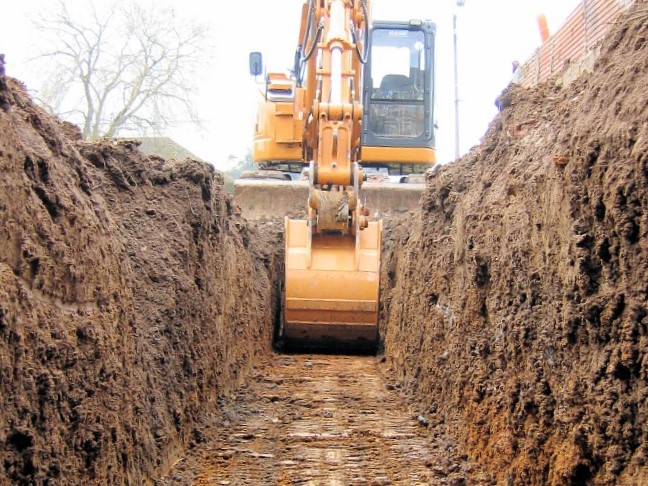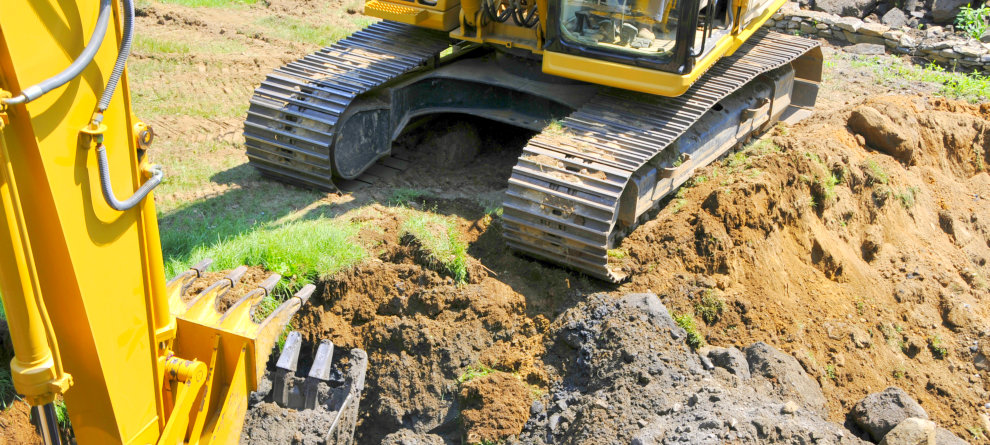Industrial Lancaster Trenching - Trenching Solutions for Services in Lancaster
Industrial Lancaster Trenching - Trenching Solutions for Services in Lancaster
Blog Article
Thorough Expedition: The Scientific Research Behind Superior Excavation Practices
The realm of excavation practices is a domain where science intertwines with workmanship to uncover the mysteries hidden below the planet's surface area. From old hand devices to modern-day hydraulic excavators, the evolution of excavation techniques has been a testament to human ingenuity and technological improvements. What genuinely establishes premium excavation practices apart is a deep understanding of geological principles, coupled with the utilization of advanced tools and methodologies. By exploring the scientific research behind these techniques, we can uncover the secrets that exist under our feet and value the accuracy and knowledge that enter into every dig.
Evolution of Excavation Techniques
Throughout background, the development of excavation techniques has actually played a critical function beforehand building and construction techniques and archaeological explorations. From the fundamental tools used by our forefathers to the advanced equipment utilized in modern times, the development of excavation techniques has significantly transformed just how we approach various projects.
In old times, hands-on labor with standard tools such as pickaxes, wheelbarrows, and shovels was the main approach of excavation. This labor-intensive process restricted the depth and extent of excavations, commonly resulting in slow-moving development and restricted accessibility to certain websites. However, as human beings advanced, so did the methods and devices made use of for excavation.
The Industrial Change marked a turning factor in excavation experiment the introduction of steam-powered machinery. This advancement changed the field, enabling for faster and extra extensive excavations. In contemporary times, innovation plays a crucial role in excavation, with developments like general practitioner systems, drones, and 3D scanning boosting accuracy and efficiency in the field. The development of excavation methods remains to form the method we construct, discover, and understand the world around us.
Function of Innovation in Excavation

The integration of cutting-edge modern technology has actually basically transformed the field of excavation, enhancing precision and performance to extraordinary degrees. One of the crucial technical improvements that has dramatically influenced excavation methods is the use of GPS systems. These systems permit specific mapping of excavation sites, enabling drivers to accurately locate below ground utilities and frameworks. Furthermore, using telematics in excavation tools has enabled real-time surveillance of maker performance, leading to proactive maintenance and raised operational performance.
Moreover, the arrival of 3D modeling and simulation software program has streamlined the preparation process for excavation projects. Designers and drivers can now imagine the entire excavation process before beginning, optimizing and identifying prospective difficulties operations. In conjunction with this, the implementation of drones in excavation activities has actually promoted airborne studies, volumetric measurements, and site examinations with unmatched speed and accuracy.
Geological Principles in Excavation
An understanding of geological concepts is crucial for ensuring the structural integrity and stability of excavation sites. Geological aspects play a crucial role in identifying the feasibility and security of excavation jobs (septic ohio). One key geological concept to consider is the type of soil or rock present at the site. Different soil types, such as sand, gravel, or clay, have differing levels of security and require various excavation techniques. Cohesive soils like clay may require additional assistance to stop collapses, while sandy soils may be vulnerable to disintegration during excavation.
By carrying out extensive geological studies and evaluation, engineers and excavators can create techniques to minimize risks and make sure the effective conclusion of excavation projects. Eventually, including geological concepts into excavation methods is critical for achieving risk-free, effective, and lasting outcomes.

Latest Tools for Excavation
In the realm of excavation methods, contemporary advancements in devices have reinvented the effectiveness and accuracy of excavation procedures. Among the current devices making waves in the market is making use of drones geared up with advanced imaging technology. More hints These drones can provide detailed airborne studies of excavation sites, offering real-time information on topography and possible threats. This info aids in better planning and decision-making throughout the excavation process.
Another cutting-edge device getting popularity is the execution of 3D printing innovation for creating personalized excavation devices. This enables the manufacturing of specialized tools that are customized to the certain requirements of a task, raising efficiency and decreasing downtime.
Furthermore, innovations in materials scientific research have led to the advancement of stronger and extra sturdy excavation devices. lancaster trenching. Tungsten carbide-tipped excavator attachments, as an example, offer exceptional performance in tough ground problems, boosting efficiency on-site
Scientific research's Influence on Excavation Practices

In addition, improvements in materials science have actually led to the production of stronger, more sturdy excavation devices and equipment. For example, using composite products in diggers and shovels has boosted their efficiency and durability, ultimately increasing performance on excavation websites. Furthermore, clinical research on dirt mechanics and geotechnical design has given important understandings into dirt actions, enabling excavation specialists to make educated choices regarding excavation techniques and soil stablizing techniques. On the whole, science remains to drive technology and enhancement in excavation practices, making excavation tasks much more reliable, cost-efficient, and sustainable.

Verdict
Finally, the development of excavation strategies has actually been greatly affected by improvements in modern technology and a much deeper understanding of geological principles. The most up to date devices look at more info and devices used in excavation have actually boosted effectiveness and precision in the area. The application of blog here clinical knowledge has actually substantially improved excavation practices, bring about a lot more lasting and effective approaches for excavating various kinds of materials.
In the world of excavation techniques, modern advancements in tools have revolutionized the efficiency and precision of excavation procedures. By leveraging clinical concepts, the excavation sector has actually been able to substantially boost performance, precision, and security in excavation procedures. GPR permits excavation groups to non-invasively scan and map subsurface frameworks, utilities, and prospective risks, enabling them to prepare excavation tasks with higher precision and decreased danger of accidents.
Additionally, clinical study on dirt auto mechanics and geotechnical design has offered valuable understandings right into soil actions, enabling excavation professionals to make enlightened choices concerning excavation techniques and soil stablizing methods. In general, science proceeds to drive technology and renovation in excavation methods, making excavation projects extra effective, cost-effective, and lasting.
Report this page